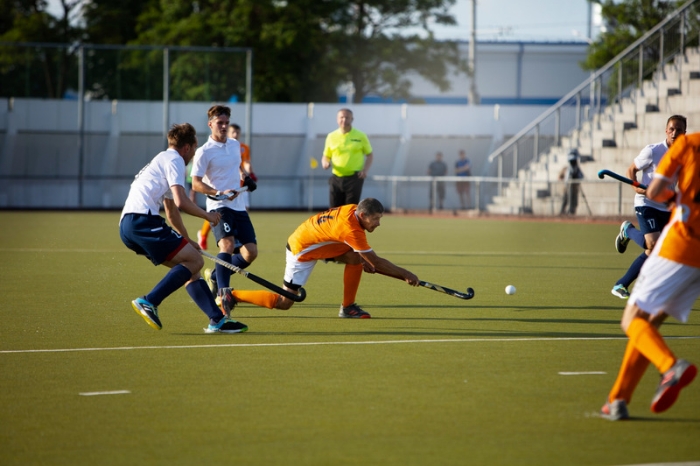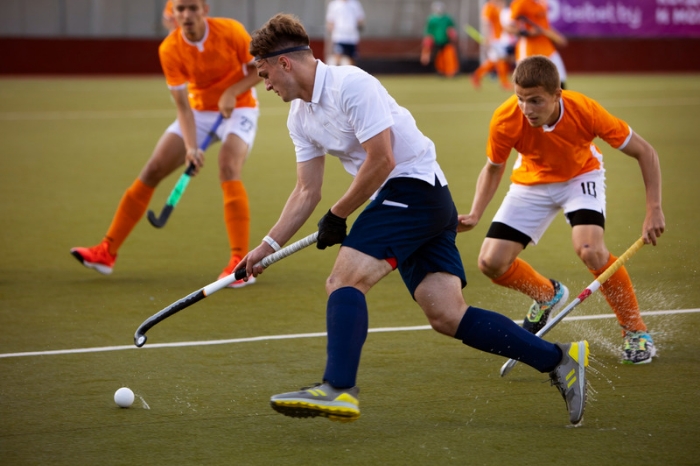How long are Hockey Intermissions?

Field hockey is a challenging sport, requiring an array of physical stamina, tactical awareness, and mental resilience from its players. As a rigorous, high-speed, and action-packed game, field hockey demands frequent periods of respite to enable players to restore their energy and recalibrate their playing strategies. Intermissions provide these essential intervals of recovery and strategically reshape the game – in this article, we’ll analyze the duration and essentiality of hockey pauses in its namesake sport, how they affect the play, and the advantages they offer to both competitors and management.
Importance of Intermissions in Field Hockey:
Field hockey games are split into two halves, and there’s a break in the middle called halftime. These breaks are crucial for players to rest, drink fluids, and get advice from coaches. They prevent fatigue and ensure fair competition.
The duration of halftime can change depending on factors like the level of play, local rules, and tournament structure. During this break, players can take a pause, tend to small injuries, and mentally get ready for the second half. Coaches can utilize this time to assess the team’s performance, implement strategic adjustments, and inspire the players for the remainder of the match.
Intermissions duration in Field Hockey:
The duration of intermissions in field hockey can vary due to a range of factors, such as the level of competition, the age group of players, and tournament regulations. In international matches, the standard halftime interval typically lasts for 10 minutes.
However, in lower-level games like school, college, or club matches, the length of halftime may be adjusted according to the rules set by local governing bodies. For instance, youth matches might have slightly longer intermissions to allow younger players more time to rest and recuperate.
Finding the right balance in intermission duration is crucial to ensure that players have enough time to recover without excessively prolonging the overall length of the game. A well-timed intermission facilitates the smooth flow of the match while taking into consideration the physical and mental well-being of the players.
Physical and Mental Rejuvenation:
Field hockey, an exceedingly demanding sport, necessitates substantial physical exertion from its participants. Players engage in prolonged running, rapid sprints, and frequent shifts in direction. The game’s high-intensity nature heightens the likelihood of fatigue, dehydration, and elevated injury susceptibility.
Intervals present a pivotal opportunity for players to rehydrate and replenish their energy reserves by consuming water and indulging in revitalizing snacks. This respite enables the players’ bodies to recuperate from the strenuous demands imposed by the game, thereby diminishing the risk of dehydration and muscular contractions.
Furthermore, intermissions bestow a momentous period for players to mentally regroup and recalibrate their focus. The intense competition and mounting pressure can exact a toll on the psyche, thus necessitating a brief pause to reset their cognitive faculties, reassess their strategic manoeuvres, and restore their mental acuity for the subsequent phase.
Coach Interventions and Strategic Adjustments:
Coaches have a crucial role in the halftime break. They use this time to carefully evaluate the team’s first-half performance, pinpoint areas that need improvement, and create strategic modifications accordingly. They then convey these adjustments to the players during the intermission, enabling the team to return for the second half with renewed strength.
The halftime break also serves as a chance for coaches to motivate and inspire their players. Whether addressing the team as a whole or offering individual feedback, they aim to instil confidence and uplift morale, ultimately enhancing the team’s overall performance in the second half.
Injuries and Medical Attention:
Field hockey, just like any other sport, carries the potential for injuries. While playing, players might experience minor injuries that demand prompt medical attention or evaluation. The halftime break provides an opportunity for players to receive treatment from medical personnel or physiotherapists, thereby minimizing the impact of injuries on their performance during the latter half of the game.
During the break, the medical team can thoroughly examine and tend to players’ injuries, deciding whether they can continue playing or necessitate additional medical assessment. This proactive approach towards injuries guarantees that players’ health and overall welfare are given utmost importance, all while upholding the game’s integrity.
Impact on Spectators and Entertainment:
Intermissions in field hockey are not just about injuries and player evaluations. They also serve as a vital element in enhancing the overall entertainment factor of the sport. When halftime arrives, spectators get a chance to relax, chat about the first half of the game, and eagerly anticipate the thrills that the second half will bring.
Moreover, these intermissions offer broadcasters a golden opportunity to delve into the most crucial moments of the initial half. They can analyze player performances, shed light on the strategic choices made by coaches, and provide valuable insights. By doing so, they enrich the viewing experience for fans, offering them a deeper understanding and heightened enjoyment of the game.
Managing Intermissions Efficiently:
Effective administration of interruptions is vital for guaranteeing a seamless and punctual advancement of the match. The game’s officials and organizers must synchronize the halftime interval, ensuring it commences and concludes promptly to avert unwarranted delays.
Conveying the duration of the intermission explicitly to players, coaches, and spectators is pivotal for managing expectations and preserving the game’s tempo. Furthermore, employing technology, such as stadium clocks or electronic scoreboards, can aid in upholding consistency in the duration of the interruption.
Conclusion:
Intermissions in field hockey transcend mere brief pauses amidst halves. They serve as indispensable components of the game, affording players a chance to rejuvenate, recuperate, devise tactics, and mentally rally. Coaches can exploit this interval to scrutinize the team’s execution and effect pivotal strategic modifications. While the duration of intermissions may fluctuate contingent on the calibre of play and tournament guidelines, their importance remains unwavering in safeguarding players’ well-being, preserving fair competition, and elevating the overall amusement quotient of field hockey contests.

I’m James Ritter, a sports enthusiast. I’ve played sports since school, and now I enjoy writing about them. My goal is to inspire aspiring athletes through stories of success and determination. I believe anyone can achieve greatness with the right guidance. I aim to make a positive impact on the sports community by sharing stories and insights, connecting my love for sports and writing. Join me on this journey of inspiration for all sports lovers.

